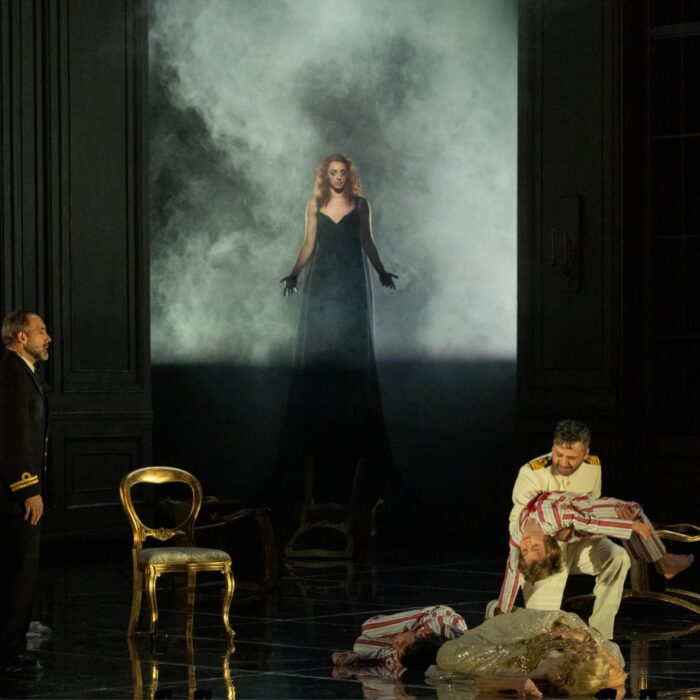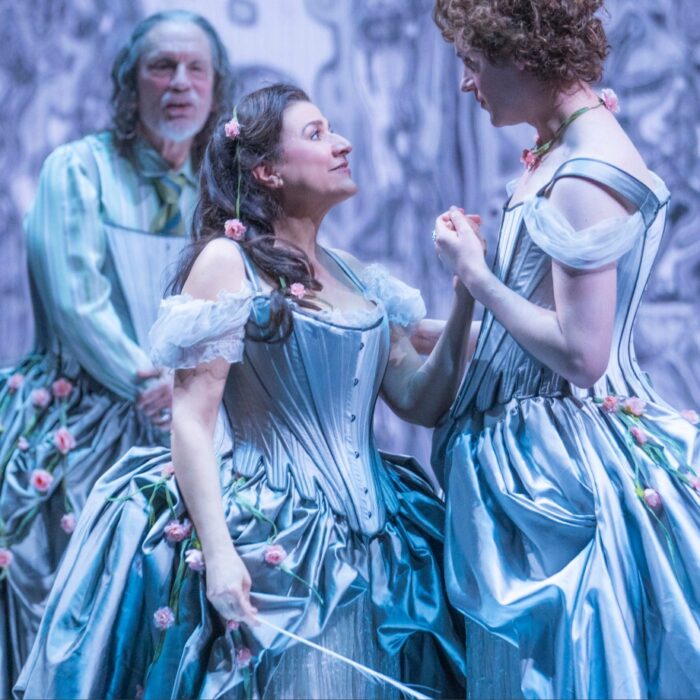
Opera Carolina 2022 Review: Tosca
Alyson Cambridge & John Viscardi Bring to Life James Marvel’s New Production
By Afton WootenJames Marvel’s new production of “Tosca” successfully portrayed the classic murderous drama in a much milder and more delicate way than its traditional setting. While right off the bat being almost lighthearted, there was no holding back from the melodramatic themes.
At the core of this was the depiction of some unexpected characters. Although sometimes an overlooked character, the Sacrastin played by James Eder set the mood for what was going to unfold. Eder’s Sacrastin showed the audience a comical approach delivered throughout the first Act, and the later frustrations and breaking points to come.
Humanism
Even as opera enthusiasts sometimes we let the conventions of opera get the better of us, especially when seeing a classic like “Tosca.” You think you know what to expect as an audience member. Typically, we expect the formula of a love debacle followed by the unfolding of an elaborate plot of sorts, and possibly bloody, revenge. Yes, all of those things are in Luigi Illica and Giuseppe Giacosa’s libretto, but Marvel’s “Tosca” gave us something more.
It gave us a human side to these characters.
Instead of Tosca’s dominatrix-like entrance, Alyson Cambridge‘s Floria Tosca arrived on stage jovial, flirty, and a bit naïve. But it worked. She wasn’t this all-knowing stage being, she was a person after all. She was a person in love.
At first, I was puzzled by this interpretation of Tosca – both the character and “Tosca” as a whole. I couldn’t help but think where this was going. Was this lighthearted first Act offsetting the violence to come? How could this Tosca end up murdering Scarpia in the next Act? But all of this ultimately created a cohesive and believable story arch.
Human interactions
John Viscardi gave his all to portraying Mario Cavaradossi. Viscardi did not hold back. His “Recondita armonia” soared through the auditorium as it seemed he sang these endearments from his heart. The fullness of Viscardi’s sound blended beautifully with the orchestra – using a wide range of dynamics swelling to fortissimo and gradually back to sweet pianos.
Cavaradossi’s interactions with Angelotti played by Ramelle Brooks portrayed a sense of realness. Neither Cavaradossi nor Angelotti really knew what to do next, but they tried their best to figure it out together. Brooks used his luscious bass sound to convey Angelotti’s turmoil, but also held true to creating a glorious operatic sound.
Tosca’s first scenes in Sant’Andrea della Valle with Mario depicted their “honeymoon phase” type of love. Their interactions were playful and winsome. This lightness carried into their dialogue throughout, which was executed extremely well. Tosca’s questioning of Cavaradossi about whom he was speaking with before her arrival was natural and easy to follow.
Steven Condy as Baron Scarpia showed another side of the human experience. Scarpia is someone arrogant and power-hungry. His airs make Tosca believe what he says about Cavaradossi and then later bring her close to submission. But Tosca lived for art and love.
In “Vissi d’arte” Cambridge gave a lovely heartfelt performance. It was the whole package. The thread that tied this work together. This was Tosca’s turning point where she morphed from a gullible girl into a passionate and driven woman. At the climax of the aria, as she begs to know why her god would abandon her, Cambridge gave in to the overwhelming emotions and sang as someone would in this state – not technically precise or in full voice, but wholesome.
Human after all
While overall a glorious production, there were a few things that detracted from the believability. The cannon fires did not come through as aggressively as expected. The supertitles were necessary to know this was happening. Also, without knowing there are cannon fires scored in the “Te Deum,” the sound was almost lost completely.
Not to say there should have been more violence, but the offstage torture scenes did not read well. It was almost impossible to hear the guards and Cavaradossi in the wings. As Scarpia called for Tosca to listen to the sounds of torture at the end of Act two there was virtually nothing to hear. Both Cambridge and Condy handled this well continuing to act appropriately.
That said, James Meena’s direction of the orchestra was magnificent. The collaboration between all of the musicians was impeccable. I was continuously taken aback by the variety and blend of all of the sounds.
Another element that elevated the performance was Michael Baumgarten’s light and projection designs. There was a cohesive color palette of pink, red, and blue dispersed through the lighting, sets, and costumes. Seeing the variety of colors used like motives was a clever choice.


